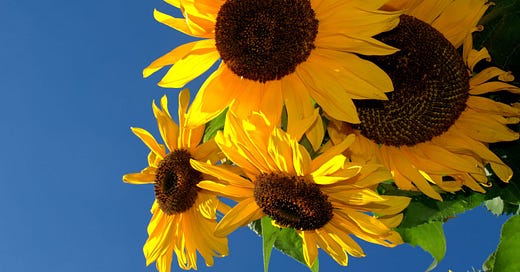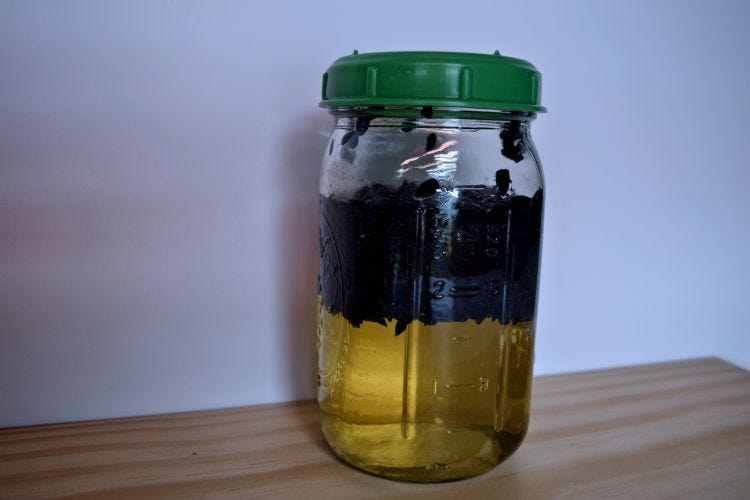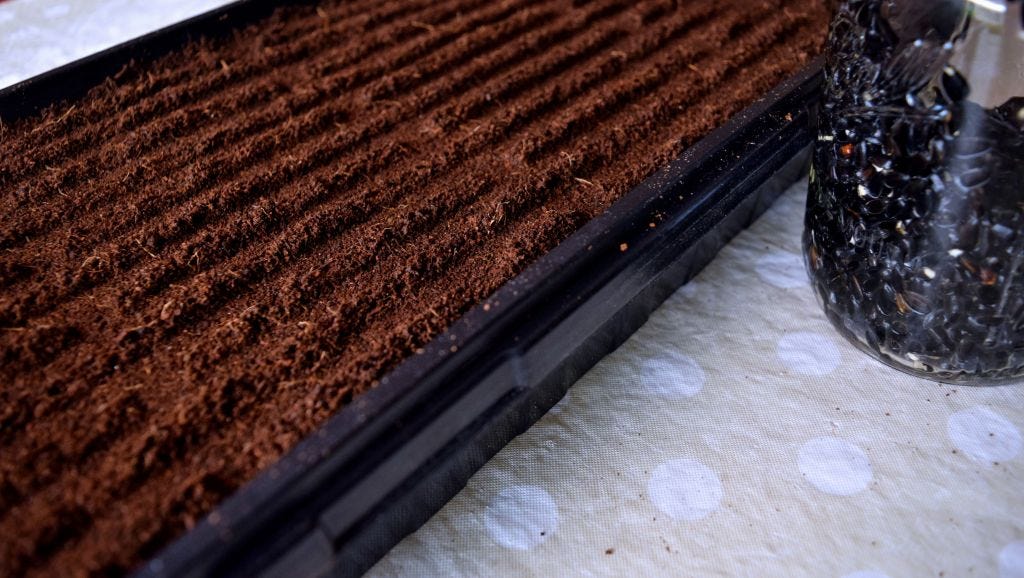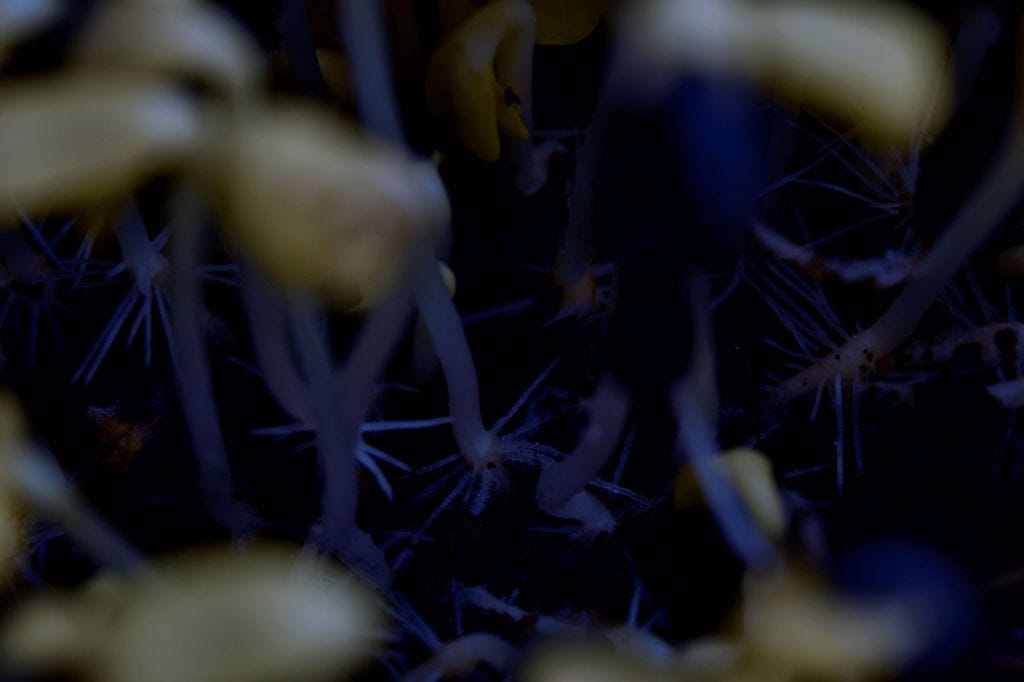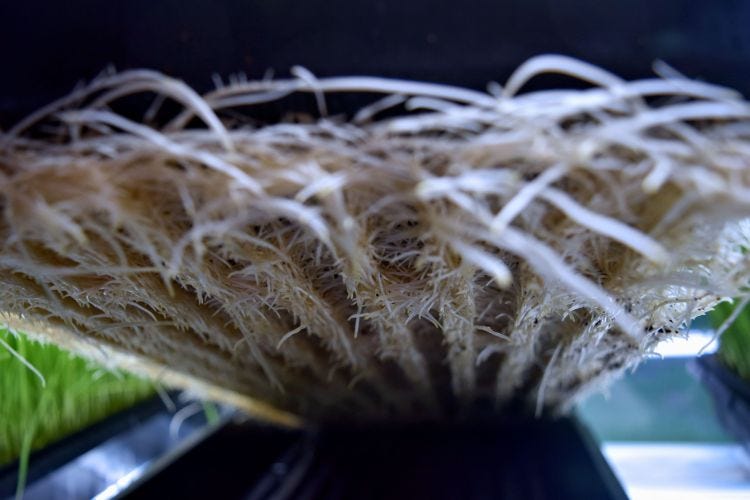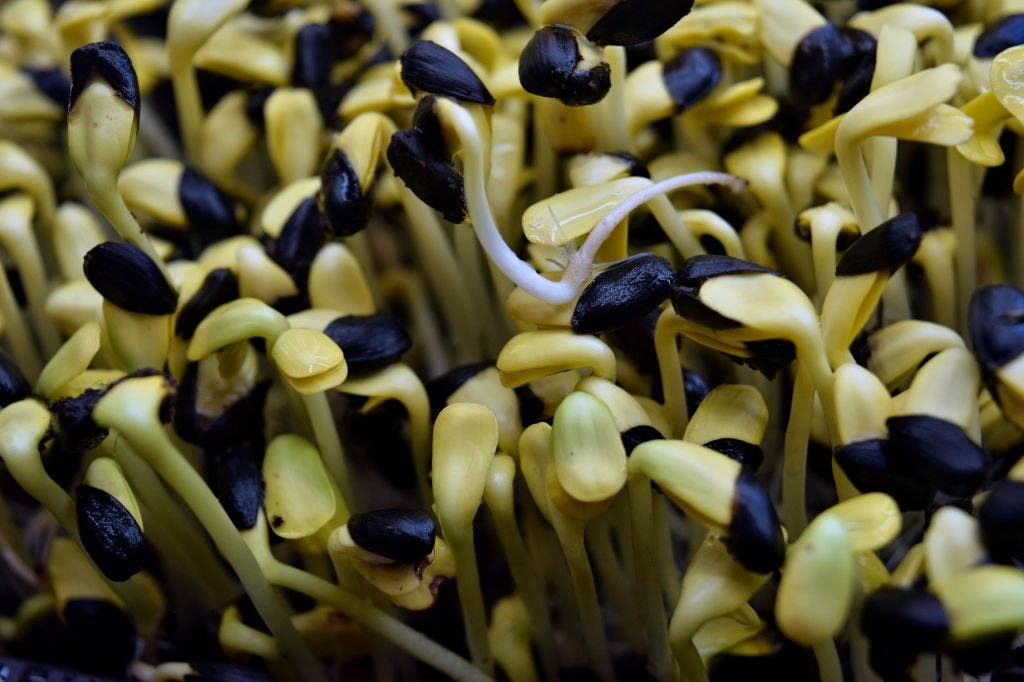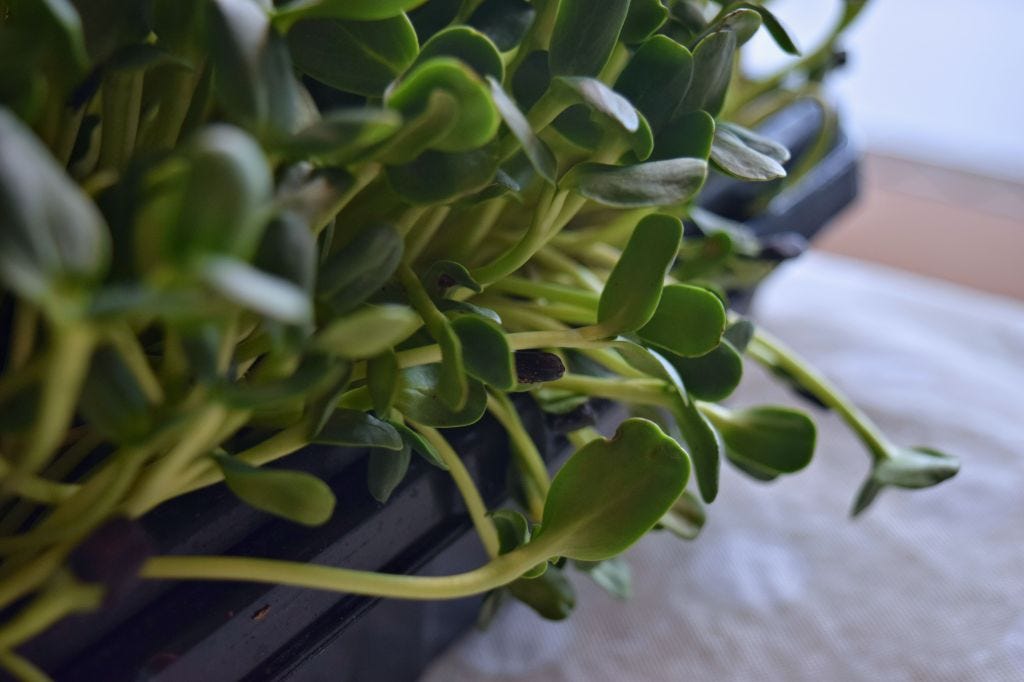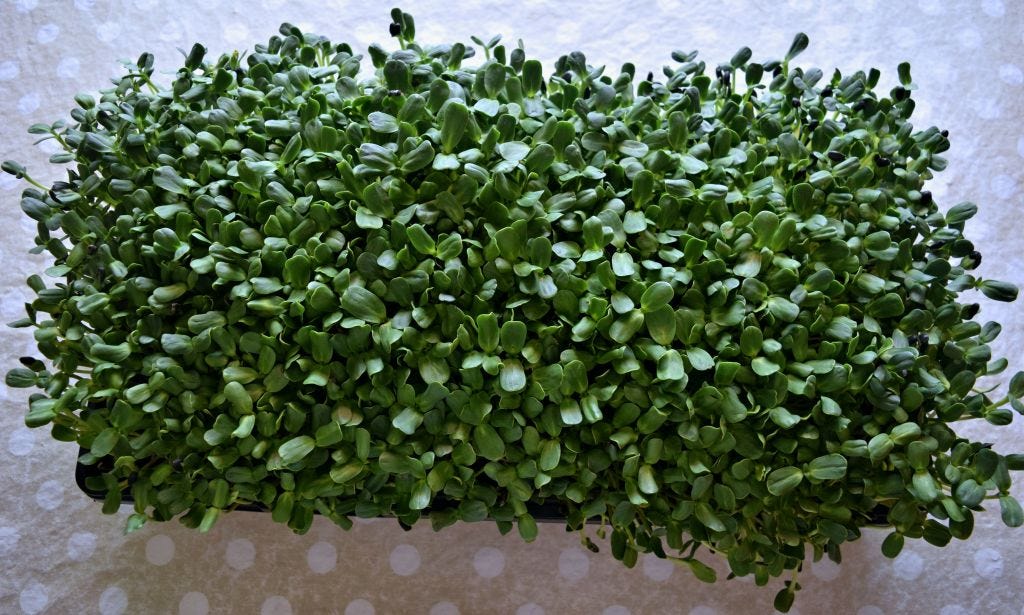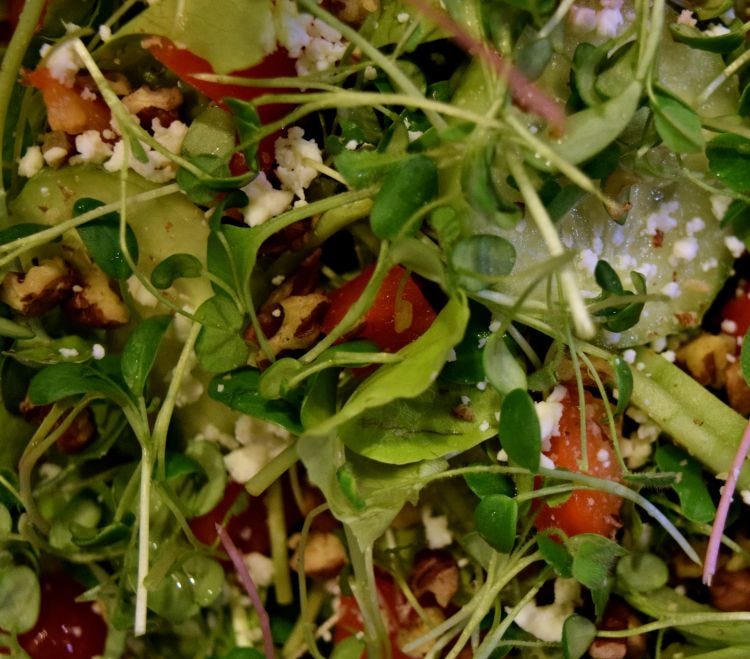Great in salads, on a sandwich or simply eaten as a snack, sunflowers are packed with nutrition and are fun and easy to grow. “Sunnies”, as they are affectionately called by growers are often one of the first crops a person new to microgreens will grow, because they are one of the easiest crops to grow.
I grow a variety known as Black Oil Sunflower Seeds which are found where sprouts and microgreen seeds are sold. Do not use sunflower seeds intended for wild bird seed. These seeds are typically sprayed with various agricultural chemicals and are not intended for human consumption.
Sunflower seed shells are stubborn little suckers when harvesting and the Black Oil variety tend to have softer shells and better germination rates. Soaking the seeds before planting softens the seed hulls and makes them easier to remove before harvesting the microgreens.
Nutrition Facts
Sunflower seeds, when sprouted are packed with nutritional benefits, which include but not limited to the following:
20-25% protein with all the essential amino acids
Rich in vitamins, minerals, as well as chlorophyll, amino acids, lecithin, choline, protein, and fiber
Sprouted seeds as opposed to the sunflower seed itself, has more natural enzymes which aid in digesting and assimilating the protein and other phytonutrients
Sunflower seed sprouts (microgreens) contain vitamins A, C, E, and B as well as calcium, iron, magnesium, niacin, zinc, selenium, potassium and phosphorus. Also a great source of lecithin and folate.
Lecithin is important for breaking down fatty acids, especially omega 3’s. Lecithin keeps our joints, tendons and bones healthy and strong.
Choline is a component of lecithin and a precursor to acetylcholine, important neurotransmitter vital to nerve and muscle function and vital for proper liver function.
Nutritional Data on Sunflower seeds dried (not sprout form)
How to Grow Sunflower Microgreens
Sunflower seeds should be soaked overnight (12 hours) in a bowl or jar. Use twice as much water as seeds as they will soak up a lot of water. For a 1020 tray I use 150 grams (or about 2 cups) of sunflower seeds and the same amount or more of water. I rinse the seeds twice and then add water to the jar and leave overnight for soaking. The green lid has holes to allow air circulation and draining when sprouting. The water is slightly discolored from the seeds (this is normal). Drain water off just before planting. If for some reason you are unable to plant after 12 hours, rinse seeds and drain properly as if to start sprouting in order to deter bacterial growth in the water and seeds.
I use a latticed tray inside a solid tray (both about 2.5″ deep) to allow for the extensive root system with sunflowers. I have been using coco coir for a growth medium and spread it evenly in the latticed tray. Using another solid tray I press the coco coir down and create a firm bed for the seeds. Spread the soaked sunflower seeds on the coco coir and use your hand to evenly distribute the seeds. Mist seeds well with sprayer followed by a misting with a food grade hydrogen peroxide 3% mixed in water to deter mold growths. Place the second solid tray on top of seeds and apply weights. I use old magazines, anything that distributes the weight evenly over the tray and is about 10-15 pounds works.
I’m fascinated by the root structures of sunflowers that develop quickly and can be seen here trying to seek water. This indicates to me that it is time for the plants to come out to the light. Once you begin bottom watering the roots grow quickly and are thick, massive root structures.
Mist seeds twice daily for the first four days (while in the blackout period), followed by a mist with the food grade hydrogen peroxide 3% and water mix. Sunflower seeds are prone to mold growth. Check each day underneath and when roots appear spray (mist) with water only on the bottom to keep roots moist and white (healthy).
After three days with weights and a day (or two) in blackout (dome top), the seeds are ready to go under the lights. Remove the domed cover from the seeds. They will appear more yellow now but will green up under the lights as they start producing chlorophyll.
Now you will need to bottom water the sunflowers with a nutrient solution. I use about 1 cup and increase to 1-1/2 cups of nutrient solution after a day under the lights. Notice the middle sunflower is whiter and has root hairs that are not embedded in the growing medium. Remove any stray sprouts otherwise they will develop a fungus and could cost you the entire crop.
Sunflower shoots have stems that are crunchy and make an awesome snack. Bet you can’t eat just one. My husband likes to “sneak” a few while I’m preparing dinner.
Air circulation is critical for sunflowers and fans should be used in your grow rooms and the use of food grade hydrogen peroxide 3% diluted in water is encouraged. Each time the seeds or foliage is misted with water, a spritz of the hydrogen peroxide should also be done.
When my “sunnies” start to dangle on the sides of the tray indicating they are drying out faster on the perimeter of the tray. Because sunflower seeds are prone to mold, I prefer to harvest earlier to avoid mold growth due to over watering in spots (middle of tray) to accommodate the drier areas on the outer rim.
Harvest in summer can be much sooner than in winter when grow room temperatures are cooler. “Sunnies” like it warm. When room temps are cooler than 70-75 degrees a “warming mat” is useful to encourage faster germination of the seeds.
Usually between Day 8 and Day 11, the sunflowers are ready to harvest. Do not water the shoots (top portion) just before harvesting. Do not wash the sprouts before refrigerating unless using immediately. Excess moisture on the foliage will encourage mold growth. Shoots will remain fresher by minimizing excess moisture during storage.
Recipe – Microgreen Harvest Salad
I call this Microgreen Harvest Salad because it includes a little of everything, well almost. Lettuce, tomato, cucumber, red pepper, feta cheese and chopped pecans are joined by sunflower, broccoli and a salad mix of microgreens. The salad mix includes clover, radish and fenugreek. For dressing I squeeze half a lemon and drizzle about a teaspoon or two of extra virgin olive oil over mine….yum!
Once you’ve grown sunflower seeds and tasted them, you’ll be keeping these little “sunnies” in your garden year around. Enjoy!

